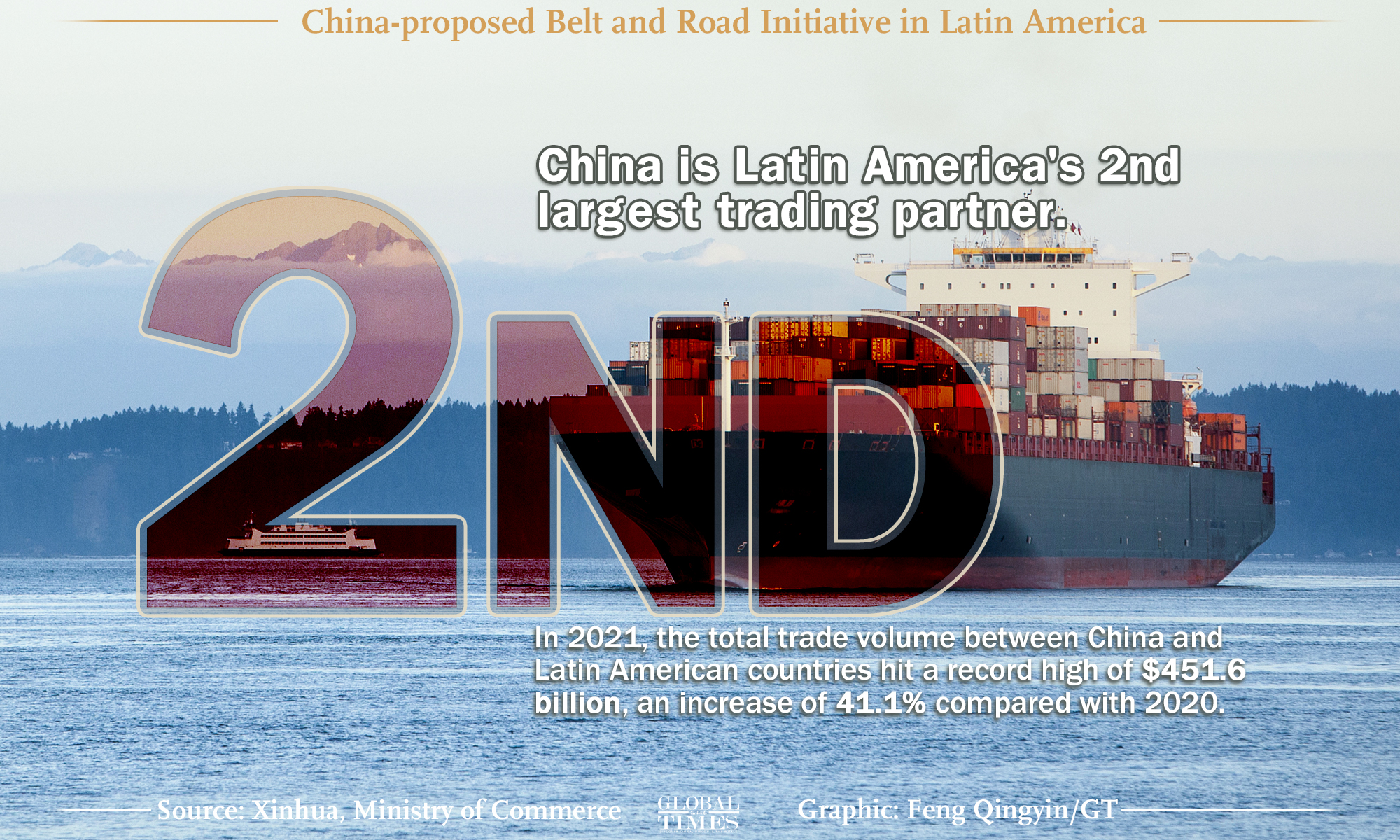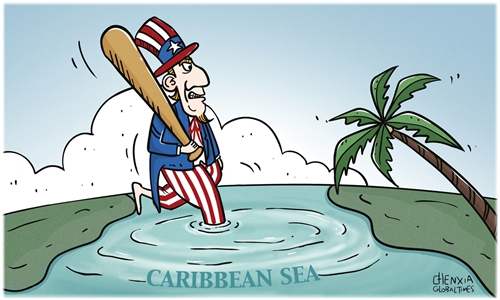US policy hits major setback in Latin America; BRI offers counterweight to American hegemony

China-proposed Belt and Road Initiative in Latin America Graphic: Feng Qingyin/GT
For years, the dominance of the US over the world was perceptible everywhere, but nowhere as much as in Latin America, a region historically recognized for its resources and which, under the influence of American doctrines, focused on the American market. But that has hindered the diversification of markets, promoting the gradual dollarization of economies or even subjecting countries that were not aligned with their projects and political interests to blockades and sanctions.
However, since then-president Donald Trump took office, the US policy has hit major setback in the Latin America region.
On the one hand, the constant commercial and migratory threat to which the region was subjected, as well as the active diplomatic distancing in the American foreign policy, has resulted in a distrust of Latin American nations toward American imperialism. This situation has become evident in the organization of the Summit of the Americas, from Monday to Friday, and the failed promotion of investment projects, both by the Trump and Biden administrations.
If there is one thing Latin America needs, it is investment. The region is made up of countries with a vast territory endowed with natural resources, but whose populations are concentrated in the major cities. That requires infrastructure projects to connect cities and, at the same time, projects that generate energy or provide large-scale services such as water treatment and sanitation, as well as connectivity projects for education and research.
The US has been losing influence in Latin America because, although it knows the needs of the area, it is far from helping the region through investment or generation of projects that facilitate these objectives. On the contrary, it has conditioned its aid, threatened governments or experimented with tactics that weaken governments, which has resulted in the strengthening of criminal gangs and governments with little margin for maneuver.
It is for this reason that countries such as Argentina, Panama, Bolivia, Jamaica, Dominican Republic and Peru, have begun to open up to Chinese investment, which has been reflected in investment projects, financing, and negotiation of trade agreements, joining the Belt and Road Initiative (BRI), an unprecedented project that generates economic benefits, jobs and development while acting as a counterweight to the US hegemony.
What's more, the BRI is not only limited to China's investment in infrastructure, but also to the possible arrival of technology companies, which could help in the region's transition to 5G, the transfer of advanced technology, technical and labor specialization, facilitating the task of bringing large marginalized areas out of years of stagnation.
A total of 21 Latin American countries, out of over 30 countries and regions, have joined the BRI. In February, one of Latin America's biggest economies Argentina also jointed the initiative. In the past two decades, Chinese investment in Latin America has exceeded $160 billion, with infrastructure projects in 25 countries.
Projects under BRI are the result of planning that has proven to have a lot of added value and vision for the future. A detailed look at each country's trade balance with China shows the gradual increase of China's presence in Latin American and Caribbean economies.
The US has attempted to promote "Growth in the Americas" initiative in 2019, and it is now launching Build Back Better World (B3W) initiative, which it touted as a reaction to the problems of the region and a response to the ravages of the pandemic.
But this new initiative is subject to the political continuity of its leader, a contrast that does not occur under the China-proposed BRI. It is evident that the stumbling blocks in the planning of the Summit of the Americas and the difficulty the US has in projecting its B3W is a symptom of the little attention the Biden administration dedicates to Latin America, as it focuses its gaze on domestic inflation, its trade and hegemonic affront with China and Russia. Even today, few people in Latin America really understand or certainly know what the B3W project means for the region.
The Summit of the Americas will serve as a gauge of the bilateral relationship and vision of Latin America and the US. On the one hand, Latin American countries learned that, if they want to be heard, it is better to act united. For the time being, Biden is looking at an embarrassing summit with many absences. To reverse the situation and boast an achievement, he must approach to the Latin American leaders with modesty and sensitivity for the problems that historically afflict the region, leaving behind the role of the "savior of the world" and acting as a generous brother who helps without expecting anything in return.
The author graduated in Law from National Autonomous University of Mexico, and Master in Comparative Law from China University of Political Science and Law. He collaborates as external consultant in issues related to law and internationalization of companies.


